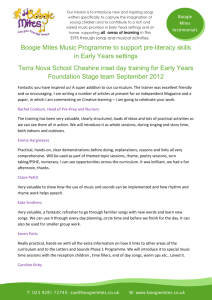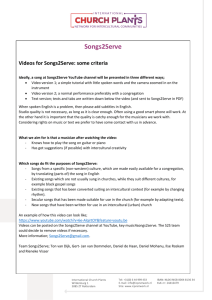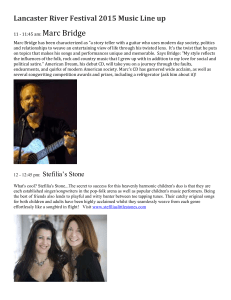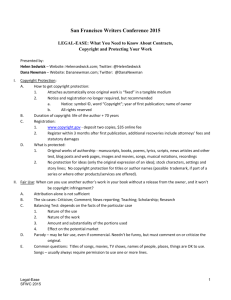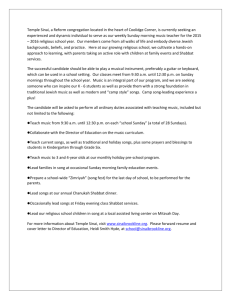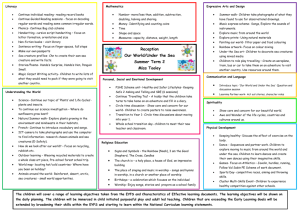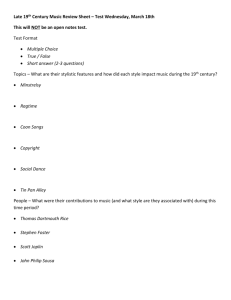The Sun Still Rises in the Same Sky Joseph Bruchac Few peoples
advertisement
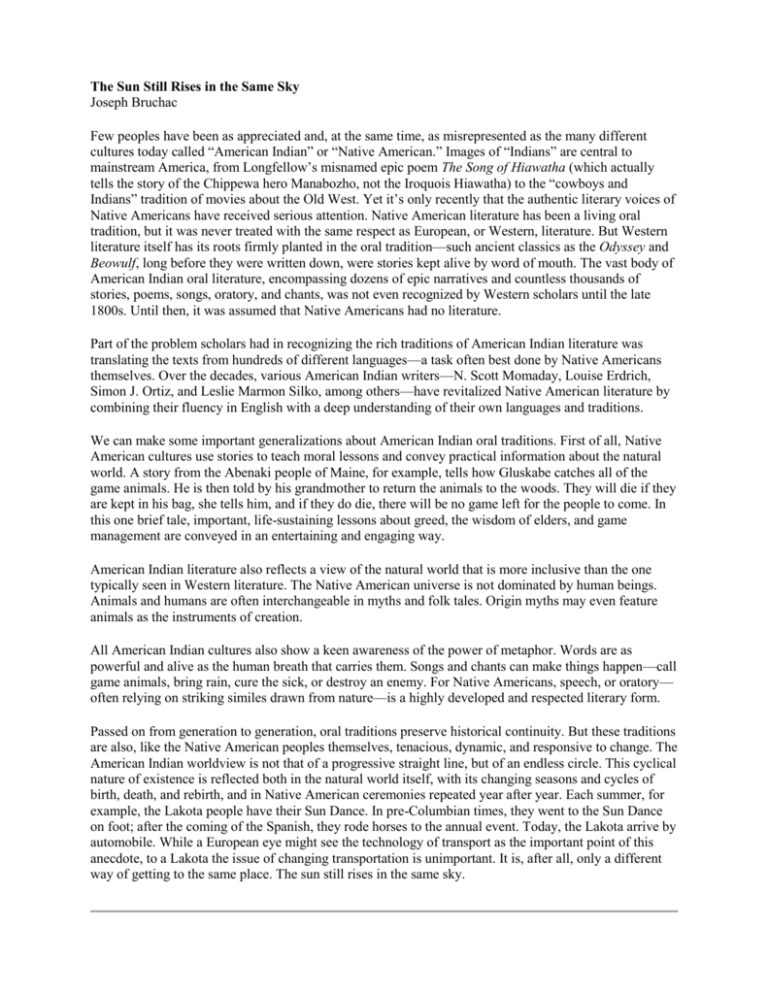
The Sun Still Rises in the Same Sky Joseph Bruchac Few peoples have been as appreciated and, at the same time, as misrepresented as the many different cultures today called “American Indian” or “Native American.” Images of “Indians” are central to mainstream America, from Longfellow’s misnamed epic poem The Song of Hiawatha (which actually tells the story of the Chippewa hero Manabozho, not the Iroquois Hiawatha) to the “cowboys and Indians” tradition of movies about the Old West. Yet it’s only recently that the authentic literary voices of Native Americans have received serious attention. Native American literature has been a living oral tradition, but it was never treated with the same respect as European, or Western, literature. But Western literature itself has its roots firmly planted in the oral tradition—such ancient classics as the Odyssey and Beowulf, long before they were written down, were stories kept alive by word of mouth. The vast body of American Indian oral literature, encompassing dozens of epic narratives and countless thousands of stories, poems, songs, oratory, and chants, was not even recognized by Western scholars until the late 1800s. Until then, it was assumed that Native Americans had no literature. Part of the problem scholars had in recognizing the rich traditions of American Indian literature was translating the texts from hundreds of different languages—a task often best done by Native Americans themselves. Over the decades, various American Indian writers—N. Scott Momaday, Louise Erdrich, Simon J. Ortiz, and Leslie Marmon Silko, among others—have revitalized Native American literature by combining their fluency in English with a deep understanding of their own languages and traditions. We can make some important generalizations about American Indian oral traditions. First of all, Native American cultures use stories to teach moral lessons and convey practical information about the natural world. A story from the Abenaki people of Maine, for example, tells how Gluskabe catches all of the game animals. He is then told by his grandmother to return the animals to the woods. They will die if they are kept in his bag, she tells him, and if they do die, there will be no game left for the people to come. In this one brief tale, important, life-sustaining lessons about greed, the wisdom of elders, and game management are conveyed in an entertaining and engaging way. American Indian literature also reflects a view of the natural world that is more inclusive than the one typically seen in Western literature. The Native American universe is not dominated by human beings. Animals and humans are often interchangeable in myths and folk tales. Origin myths may even feature animals as the instruments of creation. All American Indian cultures also show a keen awareness of the power of metaphor. Words are as powerful and alive as the human breath that carries them. Songs and chants can make things happen—call game animals, bring rain, cure the sick, or destroy an enemy. For Native Americans, speech, or oratory— often relying on striking similes drawn from nature—is a highly developed and respected literary form. Passed on from generation to generation, oral traditions preserve historical continuity. But these traditions are also, like the Native American peoples themselves, tenacious, dynamic, and responsive to change. The American Indian worldview is not that of a progressive straight line, but of an endless circle. This cyclical nature of existence is reflected both in the natural world itself, with its changing seasons and cycles of birth, death, and rebirth, and in Native American ceremonies repeated year after year. Each summer, for example, the Lakota people have their Sun Dance. In pre-Columbian times, they went to the Sun Dance on foot; after the coming of the Spanish, they rode horses to the annual event. Today, the Lakota arrive by automobile. While a European eye might see the technology of transport as the important point of this anecdote, to a Lakota the issue of changing transportation is unimportant. It is, after all, only a different way of getting to the same place. The sun still rises in the same sky. The Sky Tree as retold by Joseph Bruchac In the beginning, Earth was covered with water. In Sky Land, there were people living as they do now on Earth. In the middle of that land was the great Sky Tree. All of the food which the people in that Sky Land ate came from the great tree. The old chief of that land lived with his wife, whose name was Aataentsic, meaning “Ancient Woman,” in their long house near the great tree. It came to be that the old chief became sick, and nothing could cure him. He grew weaker and weaker until it seemed he would die. Then a dream came to him, and he called Aataentsic to him. “I have dreamed,” he said, “and in my dream I saw how I can be healed. I must be given the fruit which grows at the very top of Sky Tree. You must cut it down and bring that fruit to me.” Aataentsic took her husband’s stone ax and went to the great tree. As soon as she struck it, it split in half and toppled over. As it fell, a hole opened in Sky Land, and the tree fell through the hole. Aataentsic returned to the place where the old chief waited. “My husband,” she said, “when I cut the tree, it split in half and then fell through a great hole. Without the tree, there can be no life. I must follow it.” Then, leaving her husband, she went back to the hole in Sky Land and threw herself after the great tree. As Aataentsic fell, Turtle looked up and saw her. Immediately Turtle called together all the water animals and told them what she had seen. “What should be done?” Turtle said. Beaver answered her. “You are the one who saw this happen. Tell us what to do.” “All of you must dive down,” Turtle said. “Bring up soil from the bottom, and place it on my back.” Immediately all of the water animals began to dive down and bring up soil. Beaver, Mink, Muskrat, and Otter each brought up pawfuls of wet soil and placed the soil on Turtle’s back until they had made an island of great size. When they were through, Aataentsic settled down gently on the new Earth, and the pieces of the great tree fell beside her and took root. Early Native American Poetics The following information about Native American poetry comes from Reading Native American Literature: A Teacher’s Guide by Bruce A. Goebel (2004). Most Native American poetry was oral, not written, and most was also sung. The songs carried specific intentions; most Native American singers viewed the songs as carrying power to accomplish specific work within the tribe (analogous to prayers). For example, hunting songs were intended to help catch game and maintain natural balance; medicine songs were intended to heal; and war songs were intended to inspire bravery and prepare a warrior for death. Most early Native American songs fit into the following general categories: Religious songs Hunting songs Medicine songs Dream songs Lullabies Gambling / game songs Personal achievement songs Love songs War songs Social dance songs Praise songs While it is necessary to recognize that most readers are experiencing early Native American poetry in translation, and that there are certainly differences in literary style between individual singers and between different tribes, it is still possible to make some generalizations about common formal elements in early Native American poetry. Many songs: Use repetition and parallel structure Contain concrete natural images Use conciseness of sentence length and song length Reflect a spiritual commitment even in humorous songs Imply a tribal, public audience that already understands context Avoid personal intellectualizing (common in European and American poetry) “The Earth Only” and “The Night Chant” are traditional praise songs. The Earth Only composed by Used-As-A-Shield, translated 1918 Wica’hcala kin heya’pelo’ maka’ kin lece’la tehan yunke’lo eha’ pelo’ ehan’kecon wica’ yaka pelo’ The old men say the earth only endures You spoke truly You are right. “The Night Chant” from The House Made of Dawn from the Navajo tradition, translated by Washington Matthews In Tsegihi, In the house made of dawn, In the house made of evening twilight, In the house made of dark cloud, In the house made of male rain, In the house made of dark mist, In the house made of female rain, In the house made of pollen, In the house made of grasshoppers, Where the dark mist curtains the doorway, The path to which is on the rainbow, Where the zigzag lightning stands on top, Where the he-rain stands high on top, Oh, male divinity! With your moccasins of dark cloud, come to us. . . . I have made your sacrifice. I have prepared a smoke for you. My feet restore for me. My limbs restore for me. My body restore for me. My mind restore for me. My voice restore for me. . . . Happily I recover. Happily my interior grows cool. Happily my limbs regain their power. Happily my head becomes cool. Happily I hear again. Happily I walk. Impervious to pain, I walk. Feeling light within, I walk. With lively feelings, I walk. . . .

